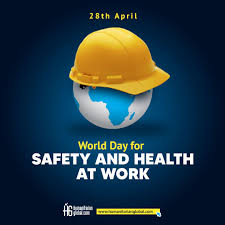South Africa Proposes Stricter Hazardous Chemical Regulations, Lowering Styrene Exposure Limit. The South African Department of Employment and Labour has introduced new draft regulations aimed at enhancing workplace safety concerning hazardous chemical agents. A notable change in the proposed regulations is the reduction of the occupational exposure limit (OEL) for styrene from 40 parts per million (ppm) to 20 ppm. This adjustment reflects a growing concern over the health risks associated with prolonged exposure to styrene, a chemical commonly used in the production of plastics, resins, and synthetic rubbers.
NEASA
Key Provisions of the Proposed Regulations
The draft regulations, published on April 5, 2024, in Government Gazette No. 50431, include several significant updates:
Classification and Risk Assessment: Manufacturers and importers are required to classify hazardous chemical agents (HCAs) before they are supplied to workplaces. A hazard assessment must be conducted by a competent person to determine the potential risks associated with each chemical agent.
Exposure Monitoring and Control: Employers must implement measures to control exposure to HCAs, including ventilation systems, personal protective equipment, and regular monitoring of exposure levels.
Inventory and Documentation: An up-to-date inventory of all HCAs present in the workplace must be maintained, along with documented risk assessments and safety data sheets.
Training and Awareness: Employers are obligated to provide training to employees on the safe handling of HCAs and to ensure that safety data sheets are readily accessible.
Implications for Industries
The reduction in the OEL for styrene has significant implications for various industries, including manufacturing, construction, and automotive sectors, where styrene-based products are prevalent. Employers in these industries will need to reassess their health and safety protocols to comply with the new exposure limits. This may involve upgrading ventilation systems, enhancing personal protective equipment, and conducting more frequent exposure assessments.
NEASA
Public Consultation and Implementation Timeline
The Department of Employment and Labour has opened a 90-day public comment period, allowing stakeholders to provide feedback on the proposed regulations. Written representations must be submitted by July 4, 2024. Once finalized, the regulations will replace the existing Hazardous Chemical Agents Regulations of 2021 and will come into effect 18 months after promulgation.
These proposed changes underscore South Africa’s commitment to improving occupational health and safety standards and aligning with international best practices.





